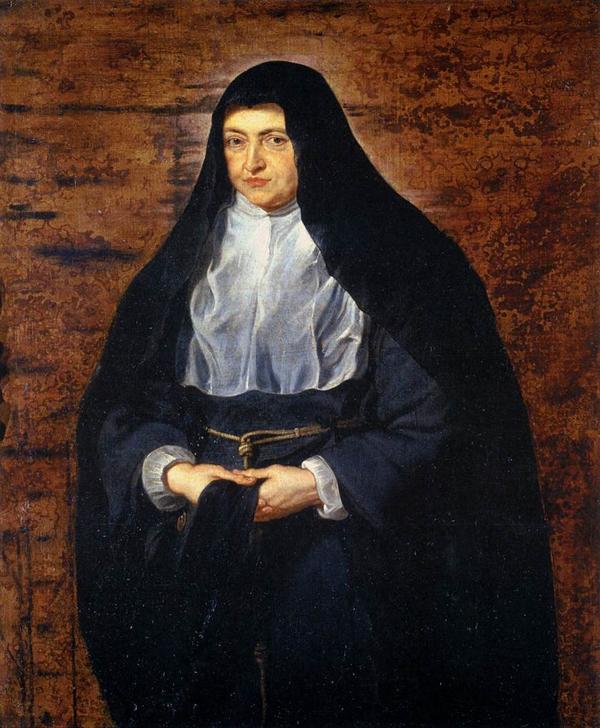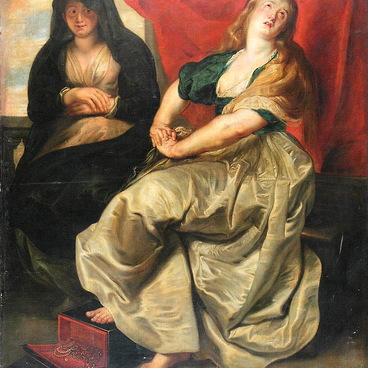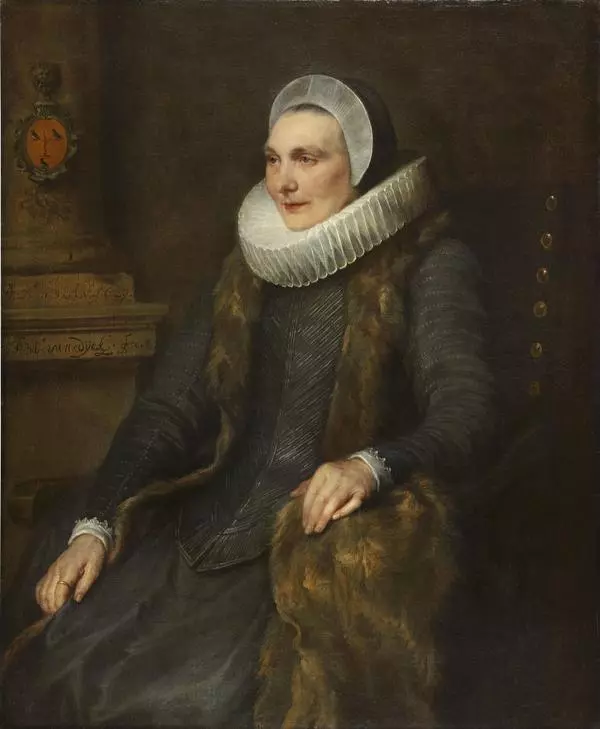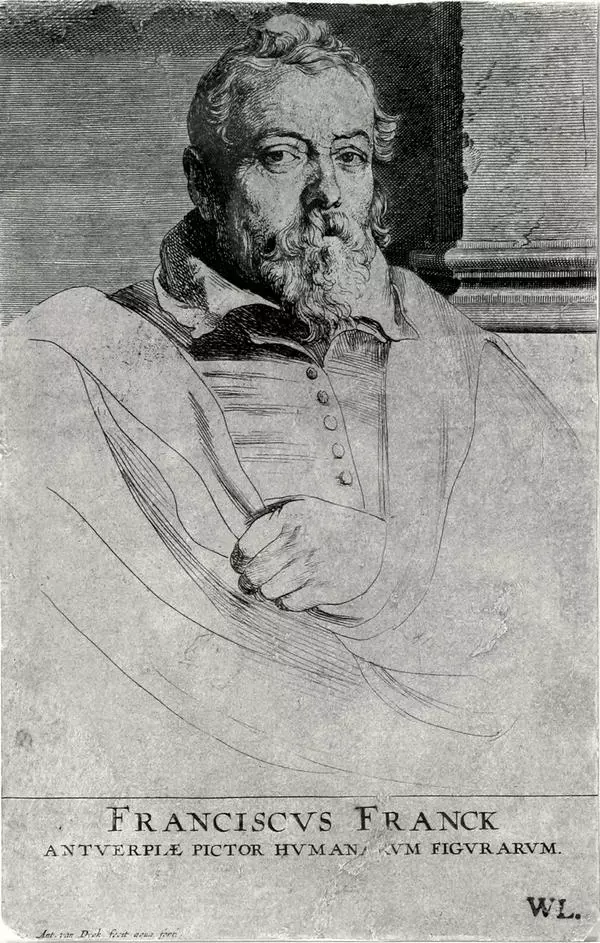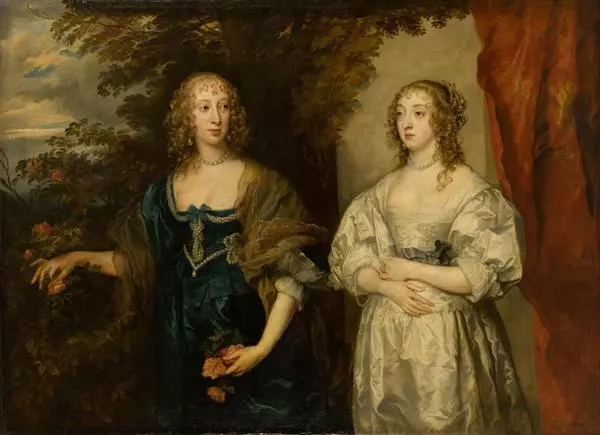The Portrait of Isabella Clara Eugenia, the Governor of the Netherlands, was painted at her request in 1628 by the court artist Anthony Van Dyck. As a basis for the portrait, the painter used a sketch by Peter Paul Rubens, created three years earlier. Later, Van Dyck and his students repeated and varied the portrait a great many times, but the finishing touches to the replicas were always made by the master himself.
Portrait of the Infanta Isabella
Время создания
1628
Размер
131,5x103,5 cm
131.5х103.5 cm
131.5х103.5 cm
Техника
canvas, oil
Коллекция
13
Открыть в приложении#3
Anthony Van Dyck
Portrait of the Infanta Isabella
#2
#5
Portrait of the Infanta Isabella, Rubens (1625) photo via: commons.wikimedia.org
Van Dyck painted this picture in several versions: shoulder-length, half-length, three-quarter-length and full-length portraits. They depict Isabella standing or sitting in an arm-chair. The paintings of this period invariably show a large and strong figure, a discerning and strong-willed look, and a monastic robe — a black tunic with a rope girdle, and a white headdress with a black coverlet.
Isabella Clara Eugenia was the daughter of King Philip II of Spain. She was an Infanta, i.e. she belonged to a Royal House but could not inherit the throne. In 1598, Isabella married Archduke Albrecht VII of Austria and received, as her dowry, the troubled Southern Netherlands, which were fighting against the Protestant northern United Provinces. Together with her husband, she achieved a 12-year truce. At that time, the situation in the country improved and people became interested in art. In Antwerp, young Van Dyck opened his own studio and started working with Rubens.
Isabella Clara Eugenia was the daughter of King Philip II of Spain. She was an Infanta, i.e. she belonged to a Royal House but could not inherit the throne. In 1598, Isabella married Archduke Albrecht VII of Austria and received, as her dowry, the troubled Southern Netherlands, which were fighting against the Protestant northern United Provinces. Together with her husband, she achieved a 12-year truce. At that time, the situation in the country improved and people became interested in art. In Antwerp, young Van Dyck opened his own studio and started working with Rubens.
#7
In April 1621, the truce ended, and in July the Archduke died. Isabella became the sole ruler of these lands. At that very time, as a sign of mourning, she joined the Franciscan Order of St. Clara and never removed her monastic Protestant robes until the end of her life. New peace negotiations failed and the country again plunged into chaos. A zealous Catholic, Isabella built temples and monasteries, received refugees of the same faith from other countries, fought poverty and wanted to restore peace. In 1627, at the height of the Thirty Years' War, Peter Paul Rubens, on behalf of the Archduchess, tried to persuade the Northern Provinces to make peace with the Southern Netherlands, but in vain. In April 1621, the truce ended, and in July the Archduke died. Isabella became the sole ruler of these lands. At that very time, as a sign of mourning, she joined the Franciscan Order of St. Clara and never removed her monastic Protestant robes until the end of her life. New peace negotiations failed and the country again plunged into chaos. A zealous Catholic, Isabella built temples and monasteries, received refugees of the same faith from other countries, fought poverty and wanted to restore peace. In 1627, at the height of the Thirty Years' War, Peter Paul Rubens, on behalf of the Archduchess, tried to persuade the Northern Provinces to make peace with the Southern Netherlands, but in vain.
Isabella died in Brussels in 1633. She was buried near Albrecht in St. Michael’s Cathedral, while the Southern Netherlands returned to the Spanish Crown. Isabella died in Brussels in 1633. She was buried near Albrecht in St. Michael’s Cathedral, while the Southern Netherlands returned to the Spanish Crown.
#10
Portrait replicas of Isabella were often presented as gifts at diplomatic negotiations, that is why today they can be seen in various museum collections of Europe: in Antwerp and Vaduz, Parma and Vienna, Paris and Budapest, as well as in private collections. The replica of the Irbit Museum is such an autograph repetition. The portrait came to the museum from the Hermitage in 1976, and before that it had been part of the Myatlevs’ collection.
читать дальшескрыть
00:00
00:00
1x
Portrait of the Infanta Isabella
Время создания
1628
Размер
131,5x103,5 cm
131.5х103.5 cm
131.5х103.5 cm
Техника
canvas, oil
Коллекция
13
Открыть в приложении
Поделиться
